Interesting Facts About Filipino Food
Feb 13, 2023 By Marie White
Filipino cuisine is a unique blend of various cultural influences, including Spanish, Chinese, and Malay. This fusion of flavors has resulted in a diverse array of dishes that are now famous worldwide. This article will take a closer look at Filipino food and explore some things you should know about it.
It is considered the national dish of the Philippines and is enjoyed by locals and tourists alike. Adobo is a versatile dish that can be made in many different ways, with each region having its variation and secret ingredients. The dish is often served with rice and can be mild or spicy, depending on personal taste. Another staple of Filipino cuisine is sinigang, a sour soup made with tamarind, vegetables, and meat (typically pork or seafood). The sour broth is balanced by the sweetness of the vegetables, making it a delicious and satisfying dish. It is often served as a main meal and is perfect for a rainy day or when you're under the weather.
The History of Filipino Food
Filipino food has a rich history that dates back to the pre-colonial era. During this time, the indigenous people of the Philippines relied on local ingredients such as root crops, fish, and games to create their meals. With the arrival of Spanish colonizers in the 16th century, the cuisine evolved to include new ingredients, such as olive oil, spices, and chorizo. Over time, other cultural influences, such as Chinese and Malay, also contributed to the development of Filipino food.
Regional Cuisines in the Philippines
The Philippines comprises 7,107 islands, and each region has its distinct cuisine. The most notable regional cuisines include Ilocano, Bicolano, and Cebuano. Ilocano cuisine, for example, is known for its use of vinegar and bagoong (fermented fish paste) in many dishes. In contrast, Bicolano cuisine is famous for its fiery and spicy dishes, such as the Bicol Express. Meanwhile, Cebuano cuisine is known for its lechon (roast pig), which is a staple in many regional celebrations and festivals.
Popular Filipino Dishes
- Adobo - Adobo is considered the national dish of the Philippines and is a staple in many households. It is a savory dish made by simmering chicken, pork, or beef in a mixture of soy sauce, vinegar, garlic, and bay leaves.
- Lechon - Lechon is a roasted pig that is a staple in many celebrations and festivals in the Philippines. The pig is marinated with a mixture of spices, such as lemongrass, garlic, and bay leaves, before being roasted to perfection.
- Sinigang - Sinigang is a sour soup made by simmering meats and vegetables in a tamarind-based broth. It is a popular dish in the Philippines and is typically served with rice.
- Kakanin - Kakanin is a Filipino dessert made from glutinous rice or sweet potato. Some popular kakanin dishes include biko (sticky rice with coconut milk and brown sugar) and Suman (sticky rice wrapped in banana leaves).
- Balut - Balut is a fertilized duck egg considered a delicacy in the Philippines. It is typically boiled and eaten with a pinch of salt and vinegar.
Eating Habits in the Philippines
Filipinos are known for their love of food, and meals are considered a time for gathering and socializing. The typical Filipino meal consists of rice, a main dish, and various side dishes. Breakfast is typically a heavy meal, with dishes such as tapa (marinated beef) and eggs being popular choices. In many households, lunch is the main meal of the day, while dinner is a lighter meal that often consists of leftovers from lunch. Filipino Food Culture Filipino food is an important part of the country's culture and is often used to express love and hospitality. Preparing and sharing meals is considered a form of nurturing in many households. Families gather to prepare food for special occasions, such as birthdays and weddings.
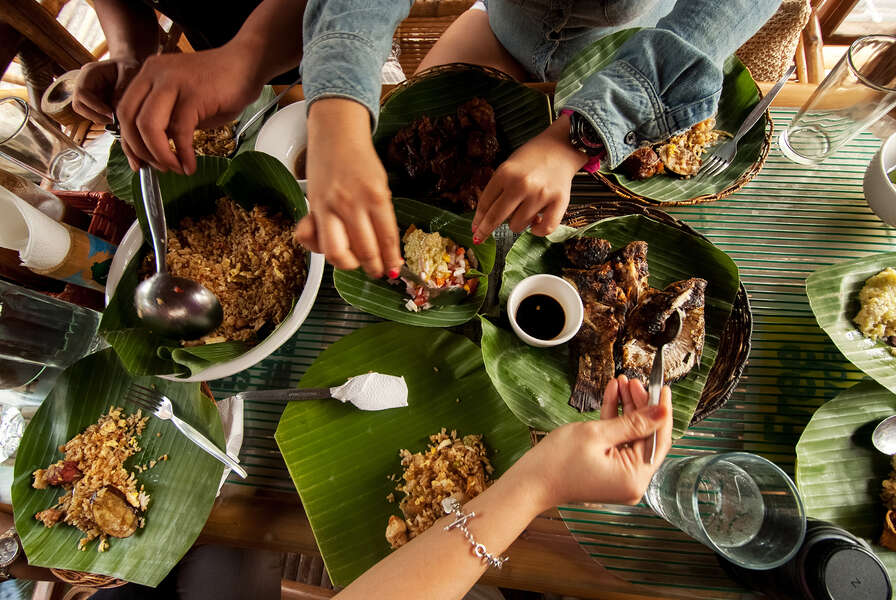
Filipino cuisine is not just limited to traditional dishes, as it has evolved over time to incorporate new ingredients and cooking methods. This has resulted in a fusion of flavors and styles, creating new dishes unique to the Philippines. Another interesting aspect of Filipino food is the use of condiments and dips, such as bagoong (fermented fish paste), soy sauce, and vinegar. These are often used to enhance the flavor of dishes and add a tangy or salty taste. These condiments also show the versatility of Filipino food, as they can complement different types of dishes, from meat and seafood to vegetables and rice.
Filipino cuisine also has a strong street food culture, with street vendors offering a variety of quick, convenient, and affordable dishes. These dishes range from skewered meats, such as isaw (grilled chicken intestines), to sweet treats like halo-halo (a dessert made with a mixture of fruits, beans, and sweet syrup). It is also worth mentioning the use of indigenous ingredients in Filipino food, such as taro, cassava, and various types of fruits and vegetables that are not commonly found in other cuisines. These ingredients add a unique flavor and texture to dishes, making Filipino food a truly unique and authentic cuisine.
Conclusion
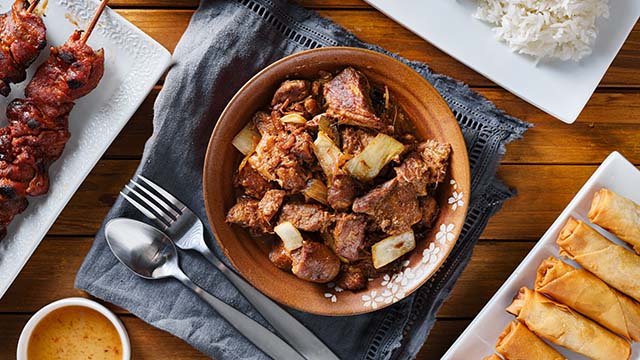
Filipino cuisine is a rich and diverse blend of various cultural influences that have created unique and flavorful cuisine. From the savory adobo to the sweet kakanin, Filipino dishes are known for their bold and distinct flavors. Eating is also a significant part of Filipino culture, with meals often being a time for gathering and socializing. Whether you are a fan of spicy dishes or sweet desserts, Filipino food has something for everyone. So the next time you want to try something new, consider exploring the world of Filipino cuisine and discover its many delicious offerings.
-
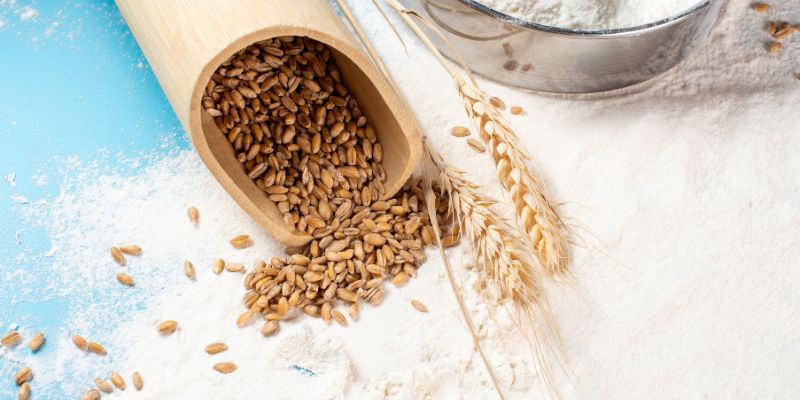 Sep 03, 2023
Sep 03, 2023What's the Difference Between Bread Flour and All-Purpose Flour: An Overview
Bread flour has a higher protein level than all-purpose flour; therefore, baked products made with bread flour have more structure and chew than those made with all-purpose flour.
-
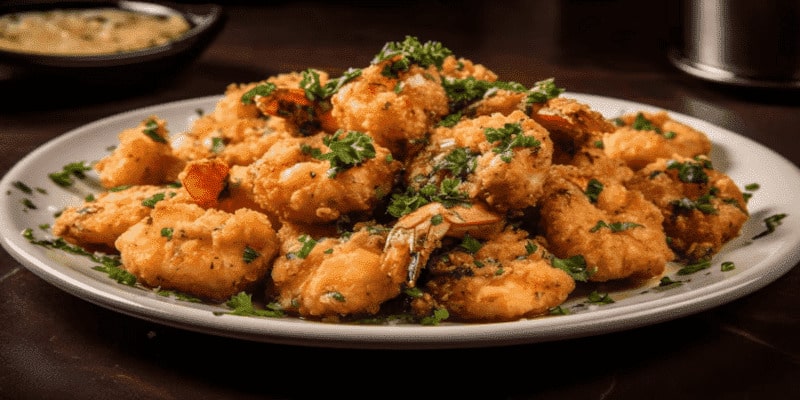 Sep 08, 2023
Sep 08, 2023Crunchy Delights: Exploring the World of Taiwanese Popcorn Chicken
Read this article to learn all about the mouthwatering Taiwanese Popcorn Chicken – from its origins to a delectable homemade recipe.
-
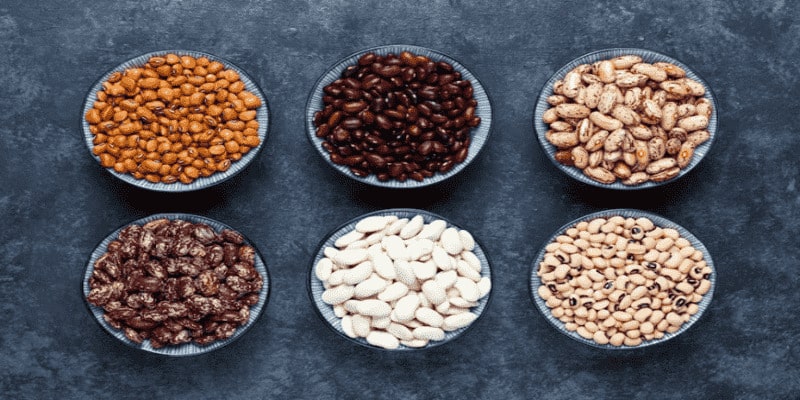 Sep 10, 2023
Sep 10, 2023Can You Stop Beans from Making You Fart: A Guide to Help You Understand
Beans are delectable, but if they're making you gassy, you can still eat them without facing bean flatulence.
-
 Sep 11, 2023
Sep 11, 2023Why Do We Cream Butter and Sugar for Cakes and Cookies?
Creamed butter and sugar play a crucial role in making the perfect cakes and cookies, but why? Let’s learn just how crucial they can be.
